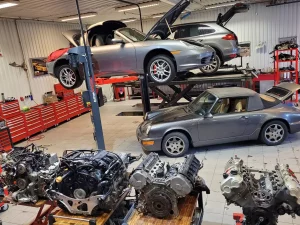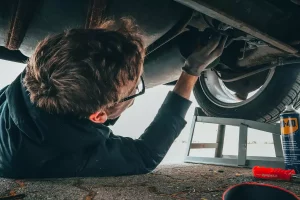Restoring a Volkswagen Beetle can be a rewarding and enjoyable project for automotive enthusiasts.
Whether you’re a seasoned mechanic or a hobbyist, bringing new life to a classic VW Beetle is a journey filled with challenges and triumphs. In this guide, we’ll explore the step-by-step process of restoring a VW Beetle to its former glory.
Gather necessary tools and materials
Before diving into the restoration process, it’s essential to gather all the necessary tools and materials. This includes basic hand tools such as wrenches, screwdrivers, and pliers, as well as specialized tools for automotive work. Additionally, you’ll need replacement parts, paint, primer, and other materials specific to your restoration project.
Assess the condition of the beetle
Start by thoroughly inspecting the VW Beetle to assess its condition. Look for rust, body damage, mechanical issues, and any other areas that require attention. Take detailed notes and photographs to create a comprehensive restoration plan. This initial assessment will help you identify the scope of the project and prioritize tasks.
Disassembly
Once you’ve assessed the Beetle’s condition, begin the disassembly process. Carefully remove all components, including the engine, transmission, interior trim, and body panels. Label each part and organize them systematically to ensure easy reassembly later. Take care to document the disassembly process to reference later during reassembly.
Bodywork and rust repair
One of the most critical aspects of restoring a VW Beetle is addressing any bodywork issues and rust damage. Use sanders, grinders, and body filler to repair dents, dings, and rust spots. Replace any severely damaged panels with high-quality replacement parts. Proper preparation of the body surface is crucial for achieving a smooth and durable paint finish.
Mechanical restoration
With the bodywork complete, shift your focus to the mechanical components of the VW Beetle. Inspect the engine, transmission, suspension, brakes, and other mechanical systems for wear and damage. Replace worn-out parts and perform necessary repairs to ensure the Beetle runs smoothly and reliably. Consider upgrading components for improved performance and reliability.
Painting and finishing
After addressing the bodywork and mechanical issues, it’s time to apply the finishing touches to the VW Beetle. Start by applying a high-quality primer to the prepared body surface to promote adhesion and corrosion resistance. Then, carefully apply multiple coats of paint, allowing sufficient drying time between each coat. Finish with a clear coat for added protection and shine.
Reassembly and final touches
Once the paint has dried, begin the reassembly process. Refer to your documentation from the disassembly phase to ensure all components are installed correctly. Take your time to reassemble the Beetle with care, paying attention to detail. Install new trim, upholstery, and accessories to complete the restoration. Finally, give the Beetle a thorough inspection and test drive to ensure everything is functioning as it should.
Restoring a VW Beetle is a labor of love that requires patience, skill, and dedication. By following this comprehensive guide, you can breathe new life into a classic Beetle and enjoy the satisfaction of driving a piece of automotive history. Remember to take your time, stay organized, and enjoy the process of bringing your Beetle back to its former glory.
Are you ready to embark on your VW Beetle restoration journey?




